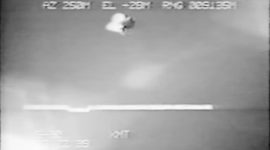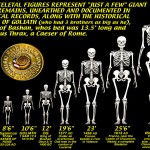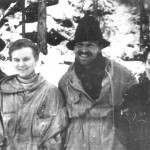Ancient Aircraft Models in Egypt and Colombia?
Did grave robbers and archeologists find ancient aircraft models in Colombia and Egypt? Two fascinating experiments have proven beyond doubt that when scaled up both Colombia figurines and Saqqara bird were capable of flight.

|
Saqqara. City of the Dead. Egypt. 1891.
A French archeologist unearthed an ancient tomb. In it, among other items, lay a small wooden model of what looked like a bird. The finds, including the small bird model, were transported to the Cairo Museum, where it remained intact until 1969 when it was discovered that the wings didn’t resemble those of an actual bird – they were thicker towards the front edge and by the |
View Larger Map |
“body” of the bird, and got progressively thinner toward the tips of the wings and the rear edges. Additionally, the figurine had an unusually shaped “rudder” in place of tail. To a modern eye the wings resembled a modern aircraft wing rather than a bird wing.

In 2006 a 5:1 scale model of the Saqqara Bird was made to test the possibility this was a model of a flying machine. Tests in an aerodynamic tunnel proved the Saqqara Bird had all characteristics of a glider. However, the model couldn’t get actually airborne because of the lack of the stabilizing rudder, or elevator, needed to maintain balance.
On closer inspection three regular carvings were found in the top edge of the tail rudder, allowing for assumption that a part of the original model was missing that could have been fixed in those carvings.
Another experiment was made where a scaled elevator element was attached to the rudder of the ancient figurine, to prove whether or not it could have been the missing part, thus allowing the model to actually fly.
A computer model was prepared and it proved that if equipped with the missing elevator, the Saqqara bird was indeed capable of flight.
| Colombia, early 20th century.
A band of grave robbers finds a grave dating 1500 hundred years back to a pre-Colombian civilization of Tolima. In the grave were hundreds of artifacts, including about a dozen of 2-3 inch gold figurines which look like modern day aircraft. They are triangular in shape, and have features that look like a fuselage, delta-wings |
View Larger Map |
and horizontal stabilizers. Even more strangely, the ancient aircraft figurines share one common feature which is not intrinsic to nature – an upright “tail-fin”, or rudder. No bird, no insect, no creature capable of flight known to science has a tail shaped and fixed like the rudder they figurines have.

Yet, the concept of upright fixed tail rudder is common in the modern day aerodynamics – no conventional aircraft is capable of flight without one (yes, B2 and alike are far from conventional). One more feature the ancient aircraft figurines show adds to the mystery – the wings are attached at the bottom of the body of whatever the figurine represents which, again, is not characteristic of any flying species we know of. No insect and no bird have their wings fixed at the bottom of the body. It’s always the top.
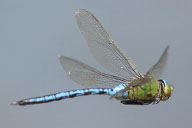 |
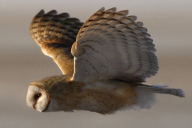 |
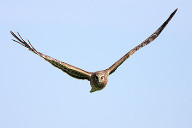 |
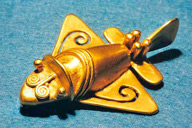 |
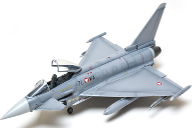 |
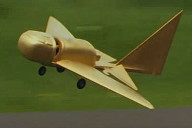 |
In 1997 two German aviation experts conducted an experiment. They reproduced one of the ancient aircrafts in a scale model to see if it is capable of flight. The only parts they added that were not originally present in the figurine were the landing gear and the engine. All other features remained exactly the same, only were scaled up, not an inch of the proportions added or removed. Once fixed with the landing gear and the engine the scale model was placed on a runway and set in motion by radio. And it flew!
|
|
Were ancient people of Egypt and Colombia more ingenious than we are assuming today? Did they know the concepts of aerodynamics? Were they able to manufacture objects capable of flight? Do these figurines represent ancient aircraft models? If yes, then why no other traces of advanced flight have been found in the two areas? Or, perhaps, did the ancients see something capable of flight and tried to represent it best they could – by making small imitations – models? Is it possible that they followed the same behavioral pattern which modern science has successfully studied, known as the “Cargo Cult”?
Or maybe, as mainstream science wants to see it, the gold figurines of Colombia and the Saccara Bird are merely an artist’s interpretation of birds, fish or insects? As always – you be the judge. |









